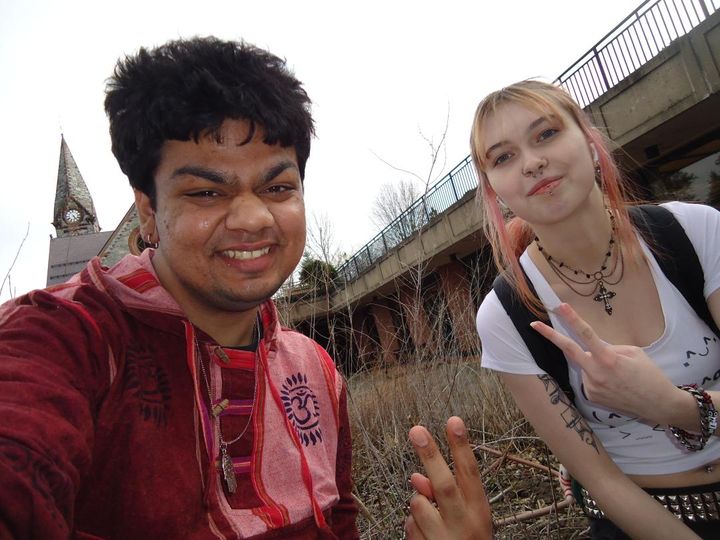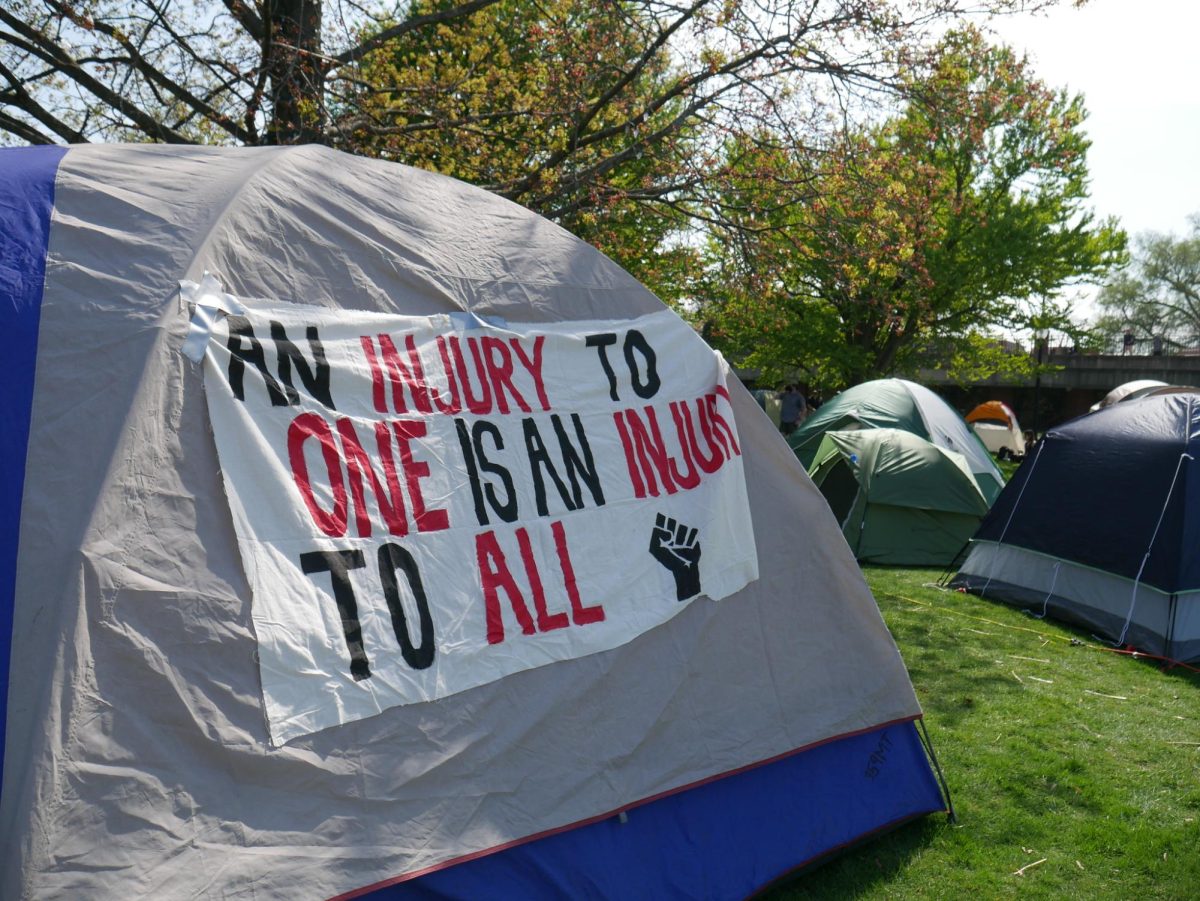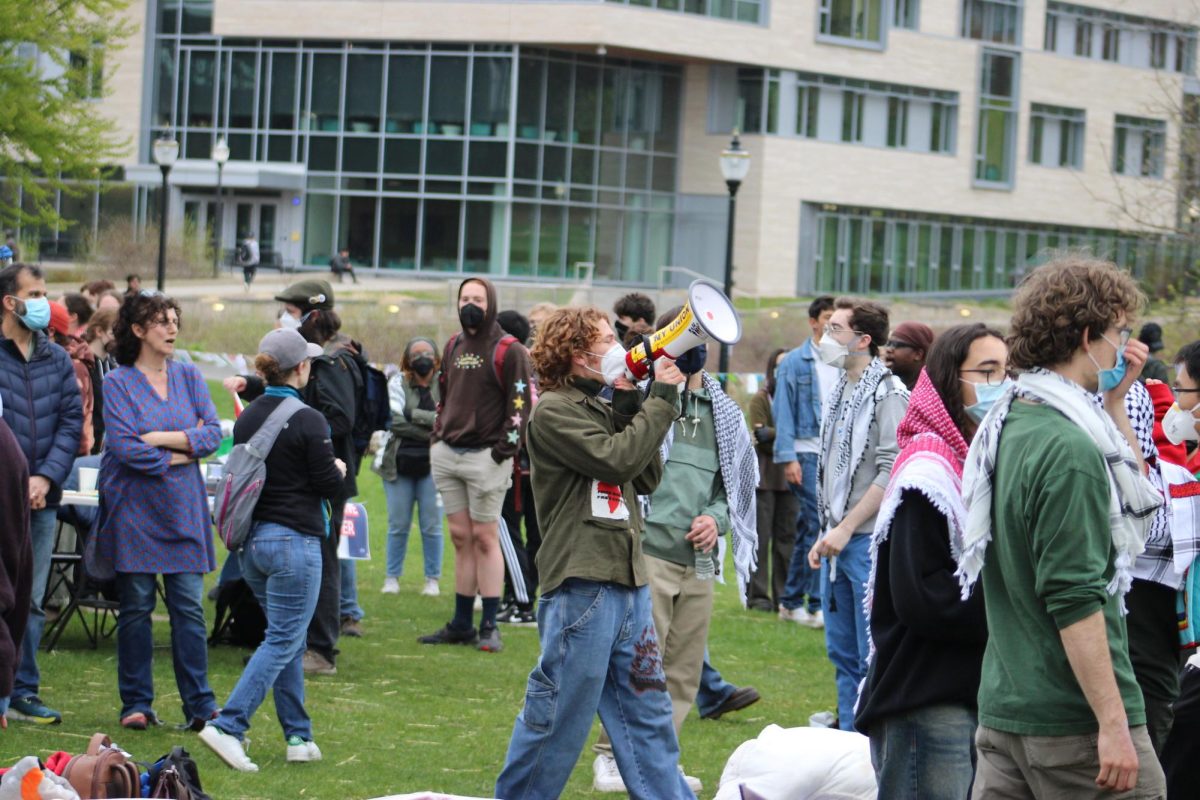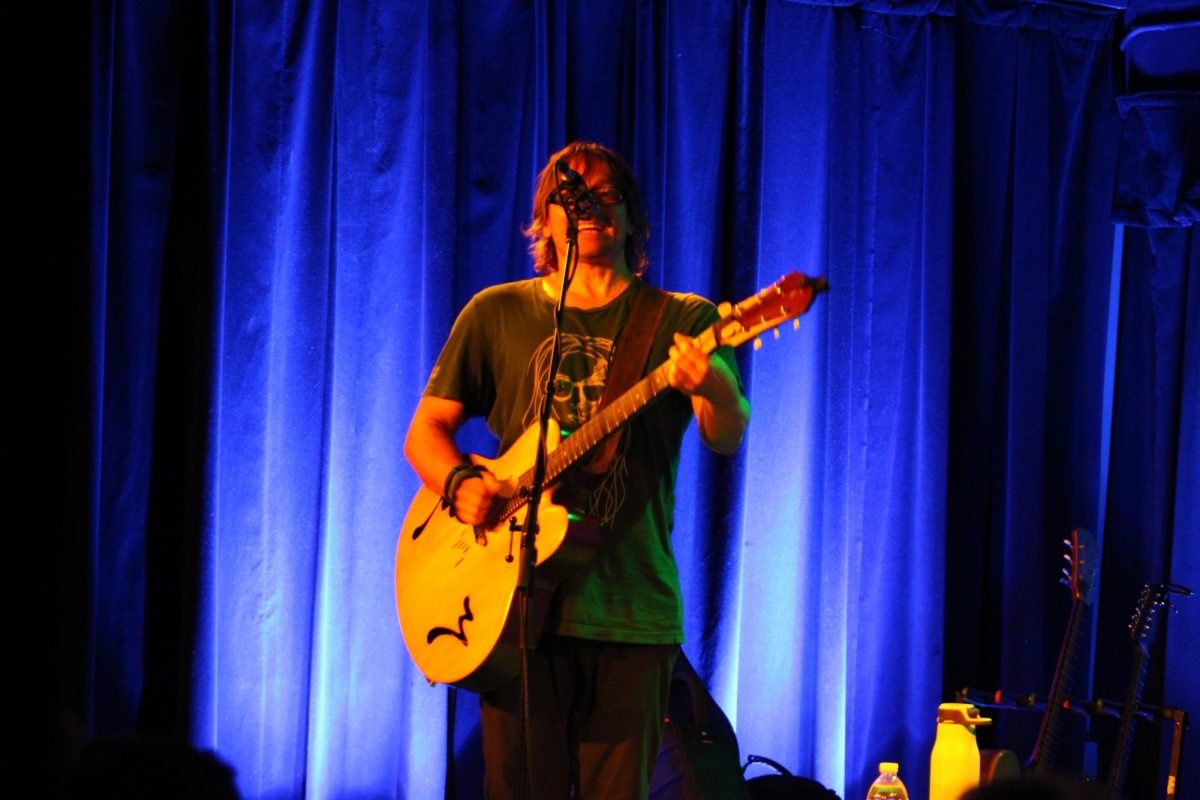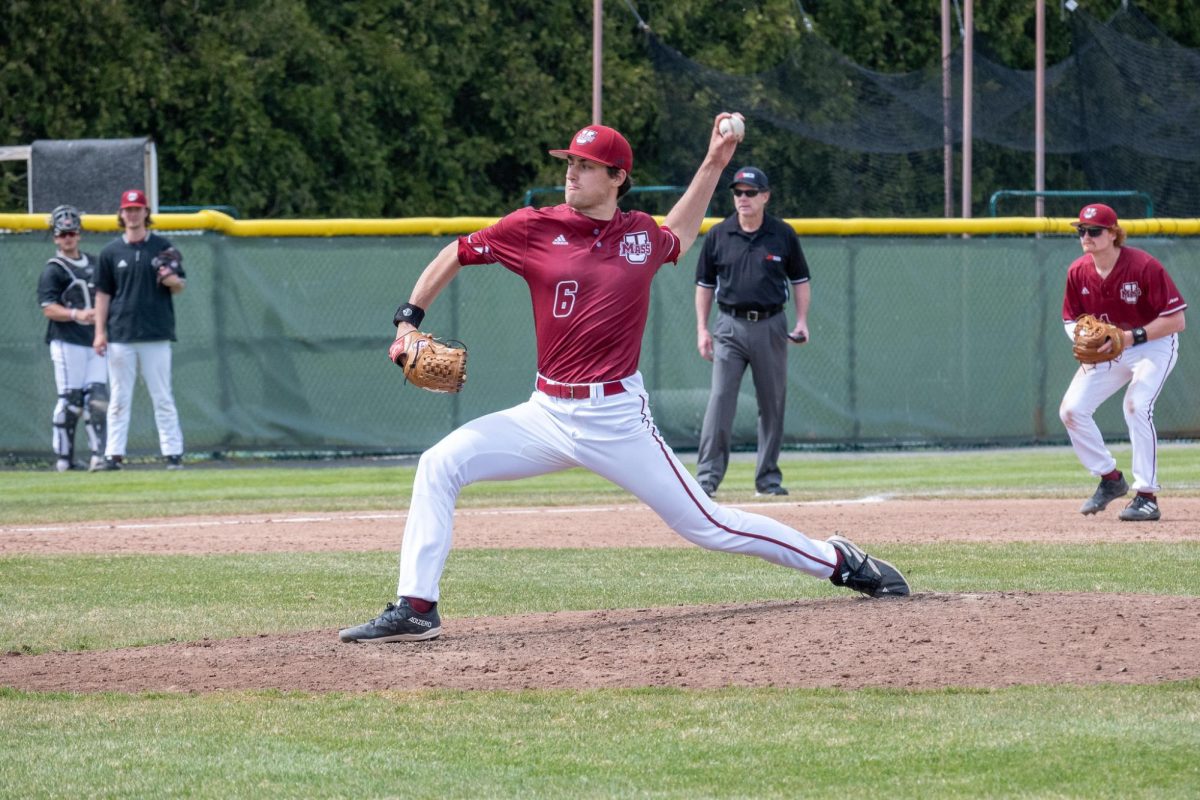Two days of protest against the Free Trade Area of the Americas late last month in Miami, Fla., drew thousands of people, including dozens of University of Massachusetts students, one of which was arrested and hospitalized after an encounter with police .
Activists were met by thousands of police in riot gear as they assembled near speakers. The total number of police for the protests, which started on Nov. 20, was estimated at 2,500 to 4,000, according to FTAA Independent Media Center and various eyewitness accounts.
A 10-foot wire fence was also erected between the protesters and the Intercontinental Hotel, where the talks took place.
The protest quickly turned violent, as activists were shot with rubber bullets, tear gas, sound bombs, a new pepper-spray type of chemical weapon, tazers and other forms of non-lethal weaponry.
“There is no way to prepare your self for that,” said Emma Lang, a UMass freshman, who was present at the protests.
She described both intense feelings of community amongst the protesters and incredible tension between the police and the assembled protesters.
Lang and her affinity group, which is a small group of people who stick together for protection at protests, made the decision to act as medics during the protest. Carrying gauze, bandages, and Liquid Antacid Wash (LAW) to counter pepper spray and tear gas, they helped numerous activists who were hurt over the weekend.
Lang’s group began the day on Nov. 20 avoiding the police by merging with the AFL march and pretending to be union workers.
She said that after hearing reports of protesters being beaten by police, they made the decision to head to the Wellness Center, the primary medical care facility for those involved in the protest.
Once at the Center, they began administering eyewashes and checking for more serious injuries that needed to be treated by trained medics inside the building. Police began to march toward the Wellness Center, pushing activists back, causing all those outside the Center to retreat. Lang also said police sprayed pepper spray into the center itself.
Lang said that dozens of people, including those who were unable to see after being sprayed with pepper spray and tear gas, began running up North Miami Avenue. Medics stopped whenever the police paused in the chase to continue administering aid, before starting to run again.
Other students had similar stories from their experiences in different parts of the city. Tomi Faust, a sophomore at UMass who was also present at the protests, had comparable experiences on Biscayne Blvd.
“We saw our people get sprayed. Their eyes and faces were burning and in pain,” he said.
He said he was also particularly dismayed with the force shown by police to the protesters. “The police were there to protect the interests of multinational corporations that benefited from the FTAA. It wasn’t about protecting people,” he said.
Though the number of those arrested during the protest remains disputed, estimates range are at more then 200, according to the Associated Press. Among those arrested was Edward Owaki, a freshman Japanese studies major at UMass.
During a protest on Biscayne Blvd., Owaki was somehow separated from his affinity group. None of the members of his affinity group were present at the time of his arrest.
According to an interview with Owaki in the Miami Herald, he hit his head against the concrete ground sometime during his arrest on Nov. 20. He was brought to Jackson Memorial Hospital where he was given Tylenol and then brought to jail.
As reported in the Miami Herald, while in jail he complained of dizziness, and an inability to keep any of his food down. He was brought in front of Judge Ivan Hernandez on Nov. 21, where he tried to accept a plea, which would have released him for medical treatment. The judge was forced to deny the plea since Owaki was incapacitated at the time. His bond was set at $500.
Lang, who was present at Owaki’s release, said his friends were able to post bond and have him released from jail on Nov. 21, over 34 hours after his arrest. A medic waiting outside the jail immediately tended to him, and sent him to the hospital after noticing something was wrong. He was admitted to the hospital in stable but guarded condition in the neurological intensive care unit of Jackson Memorial Hospital.
A Miami police spokesman told the Miami Herald that he could not locate Owaki’s arrest records, but that the department in general used as much restraint as possible in dealing with and arresting protesters.
As of Saturday Owaki was unavailable for comment.
On Nov. 21, hundreds of activists participated in jail solidarity protests at the two main jails in downtown Miami where protesters were being held. At one of the solidarity rallies, after speakers spoke to a crowd of several hundred about police brutality and their experiences, the crowd marched to the jail chanting for the activists to be freed.
“The purpose of this solidarity action was to show our support for our people in jail, as well as to protest the injustice of the police,” said Faust, who was at the solidarity protests.
Despite what some call excessive police brutality, many activists wanted to move past it to the issue of what the protest was truly about.
“I’m really angry that the emphasis has been on police brutality and that the police were so brutal,” said Lang. “This is federal money being used to put down the voices of people who are simply trying to raise awareness of an organization that will effect people from Baffin Island to Tierra del Fuego.”
There are numerous lawsuits and complaints pending against the Miami police by activists at the protest.
The rally and march was organized by the American Federation of Labor – Congress of Industrial Organizations, unions and other organizations.
The FTAA is an extension of the North American Free Trade Agreement to the entire Western hemisphere with the exception of Cuba. NAFTA was implemented in 1994 as a plan to link the economies of Canada, Mexico and the United States. It promised job growth and an increase in the standard of living for all involved.
Many organizations have criticized NAFTA, arguing that it has done nothing but increase poverty, wear down consumer protections, and promote inequality while allowing violations of workers rights to continue. Opponents also point to a reduction in environmental laws and enforcement as another failure of NAFTA.
One instance that is often cited by opponents of NAFTA as an example of its failure and misuse of power is the case of the U.S.-based Ethyl Corporation. According to the FTAA Independent Media Center, under NAFTA, Ethyl Corporation forced Canada to not only drop its ban of the dangerous toxin MMT, but also pay them $13 million in damages for lost profits.
According to the FTAAIMC, the federal government appropriated $8.5 million to the Miami police to counter this protest. They said the money was part of the $87 billion Iraqi reconstruction bill.

